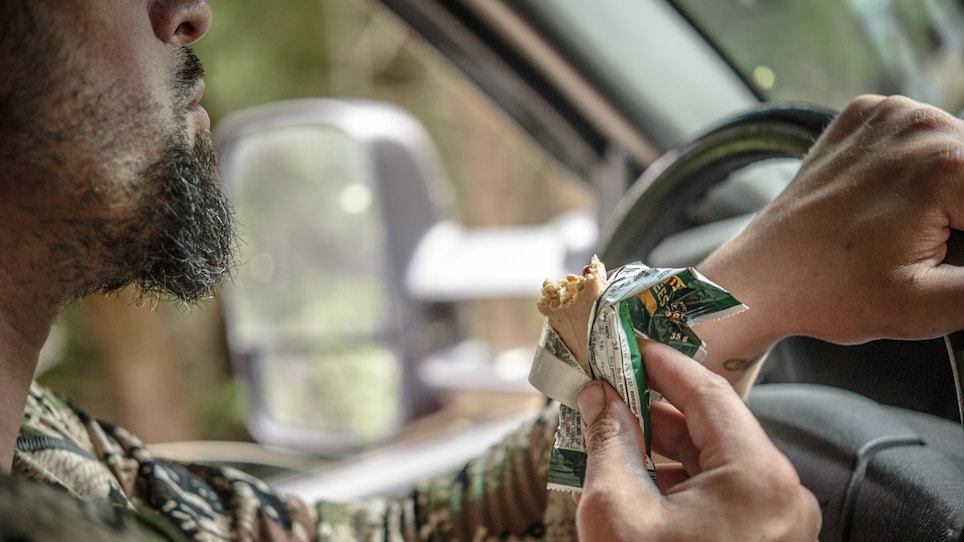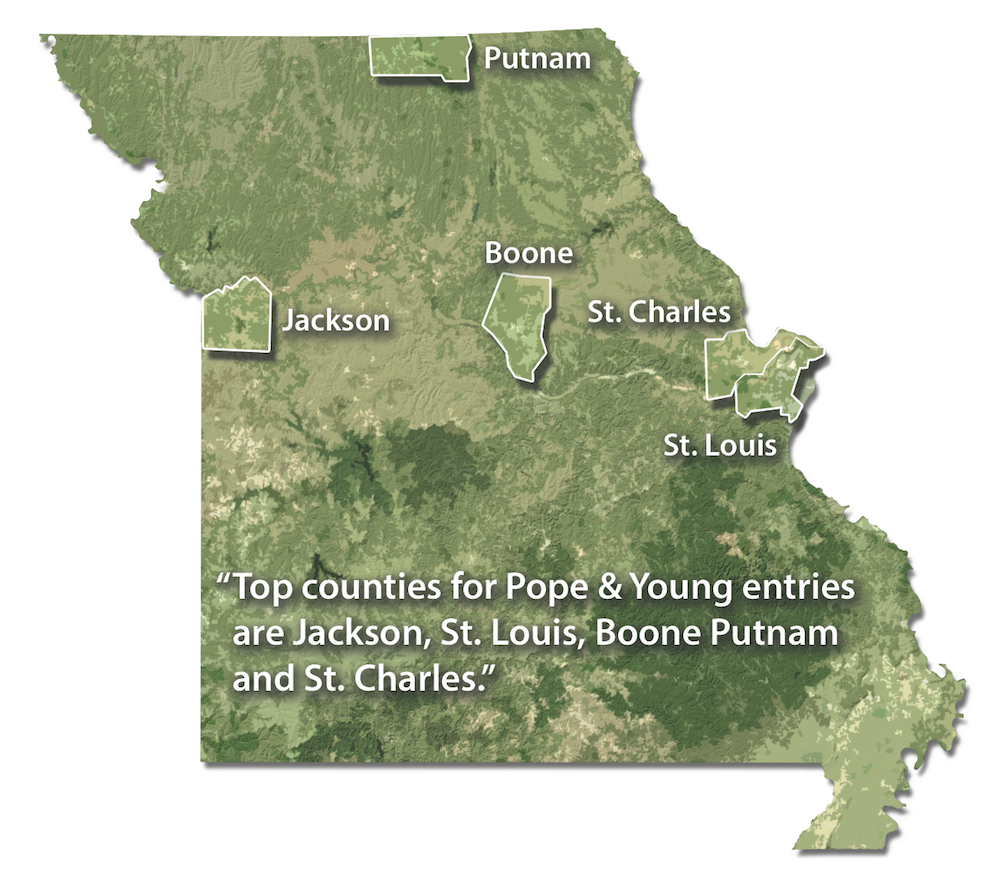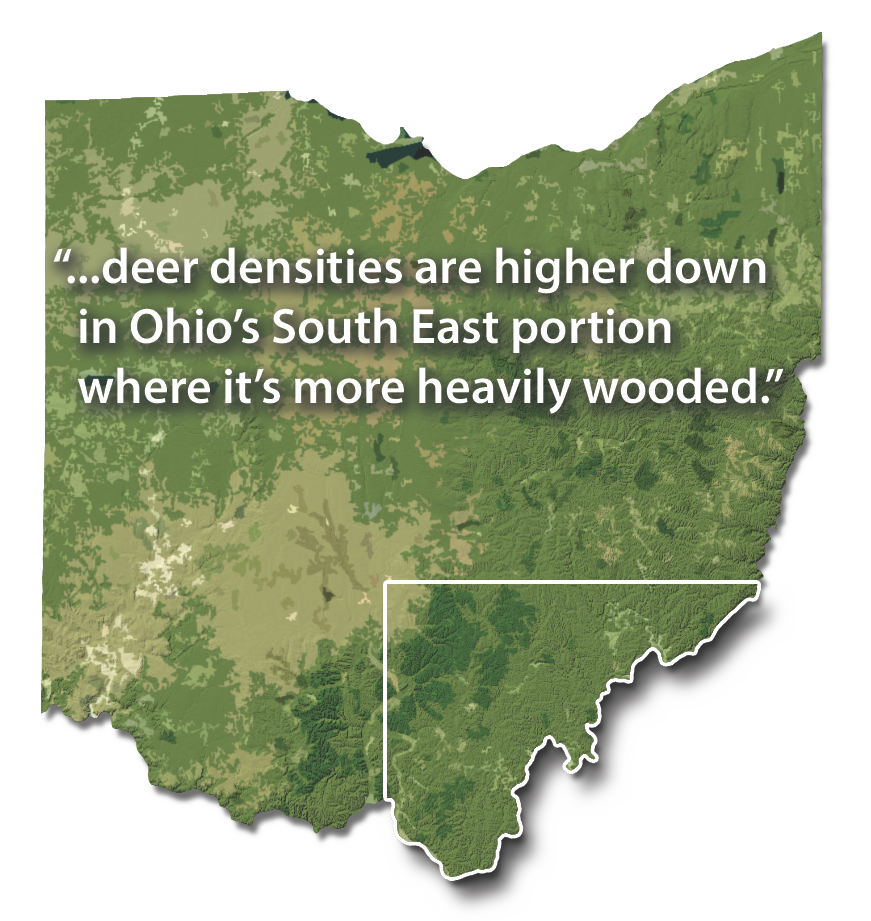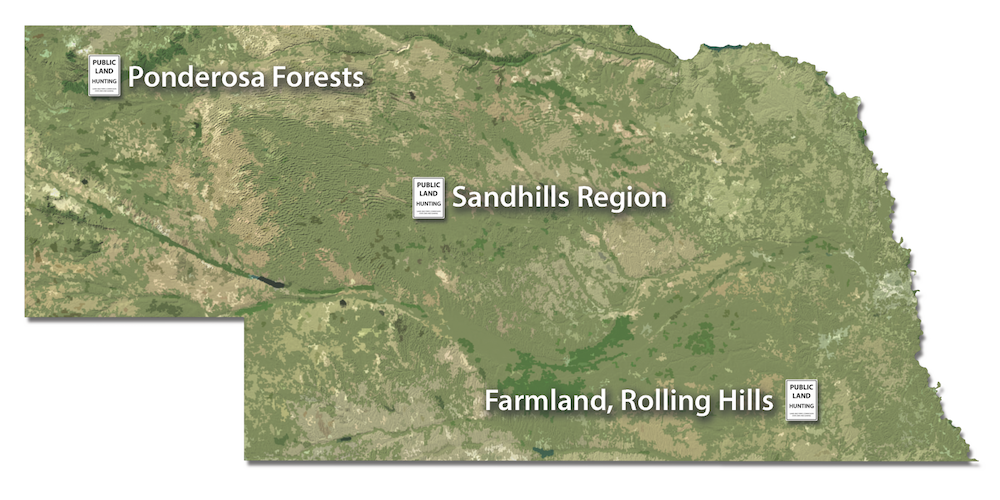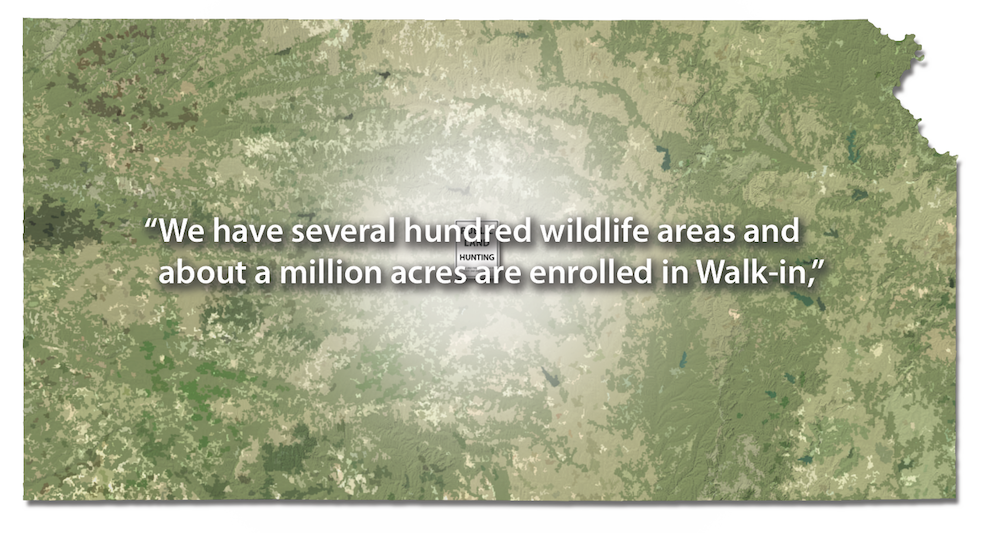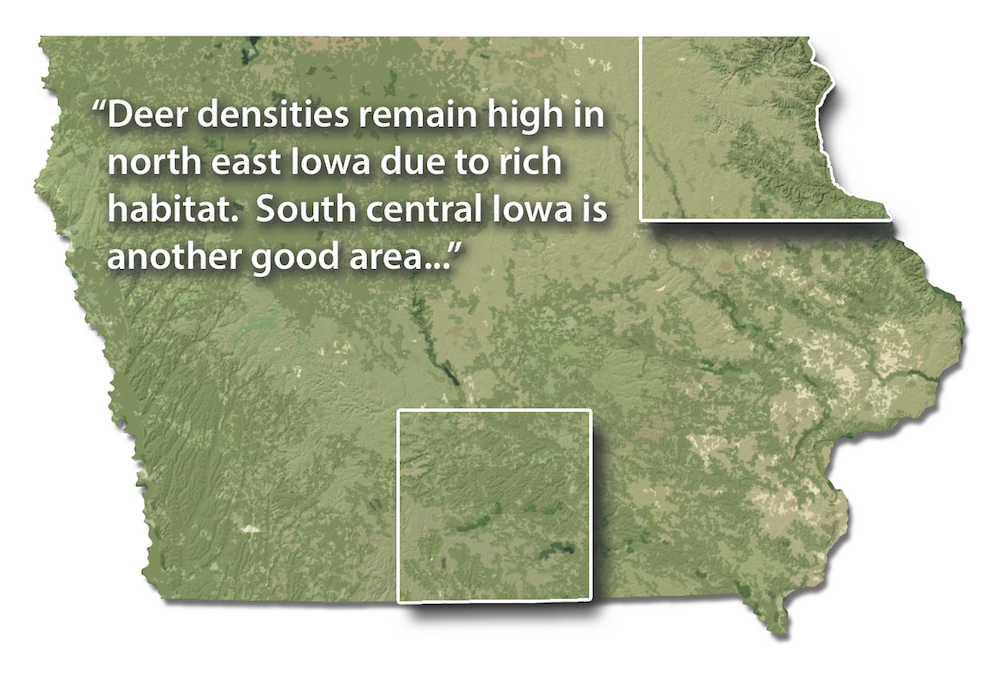Featured photo: Nick Trehearne
John Muir once wrote, “The mountains are calling, and I must go.” If I were to rephrase his quote to capture my obsession with traveling to hunt deer, I’d change only one word — I’d swap “mountains” for “whitetails.”
Most who’ve read my articles know I’m from Wisconsin, and that I travel each fall to bowhunt whitetails. People often question why I annually leave the ground I know during the rut for a far-flung location I’ve never stepped foot on. Well, “a far-flung location I’ve never stepped foot on” is the answer.
You see, I crave adventure and new experiences. I want to leave boot prints where I haven’t tread before. When I arrive someplace new — whether I succeed or fail — I know I’ll have a hunt unlike any I’ve had before. That’s the central reason I jump in my pickup and hop borders each fall.
Some hunters are under the misconception that whitetails are whitetails and when you’ve seen one, you’ve seen them all. This couldn’t be further from the truth. Of course, whitetails across North America all share some commonalities — scraping, grunting, rubbing, feeding, bedding, etc. But whitetails adapt to the habitat in which they live, and a part of the thrill I get from traveling to parts unknown for deer hunting is learning their behavior and feeding patterns relative to location. I must learn these things, and I must develop an area-specific strategy in order to capitalize.
Honestly, this takes me out of my comfort zone. But I love it! A friend and fellow writer who also travels to hunt deer on the road put it this way, “There’s a level of fear involved when you pull up stakes from the ground you know and pack up your truck. You don’t know what will happen or what you’re getting yourself into. That fear or uncertainty drives me to continually travel for whitetails.” That same friend took bucks in a Canadian province and two states last fall, and all three hunts were reportedly very different. If that doesn’t sound exciting, I don’t know what does.
10 whitetail hunting destinations for the DIY bowhunter
Perhaps I’ve piqued your interest on this whole DIY, road-tripping thing, and your next question is, “Where the heck do I go?”
Using research based on harvest data and discussions with wildlife biologists, I’ve assembled a list of 10 states — and specific locations within those states — that offer ample public-land hunting opportunities, solid whitetail numbers and the potential for trophy bucks.
10. Washington
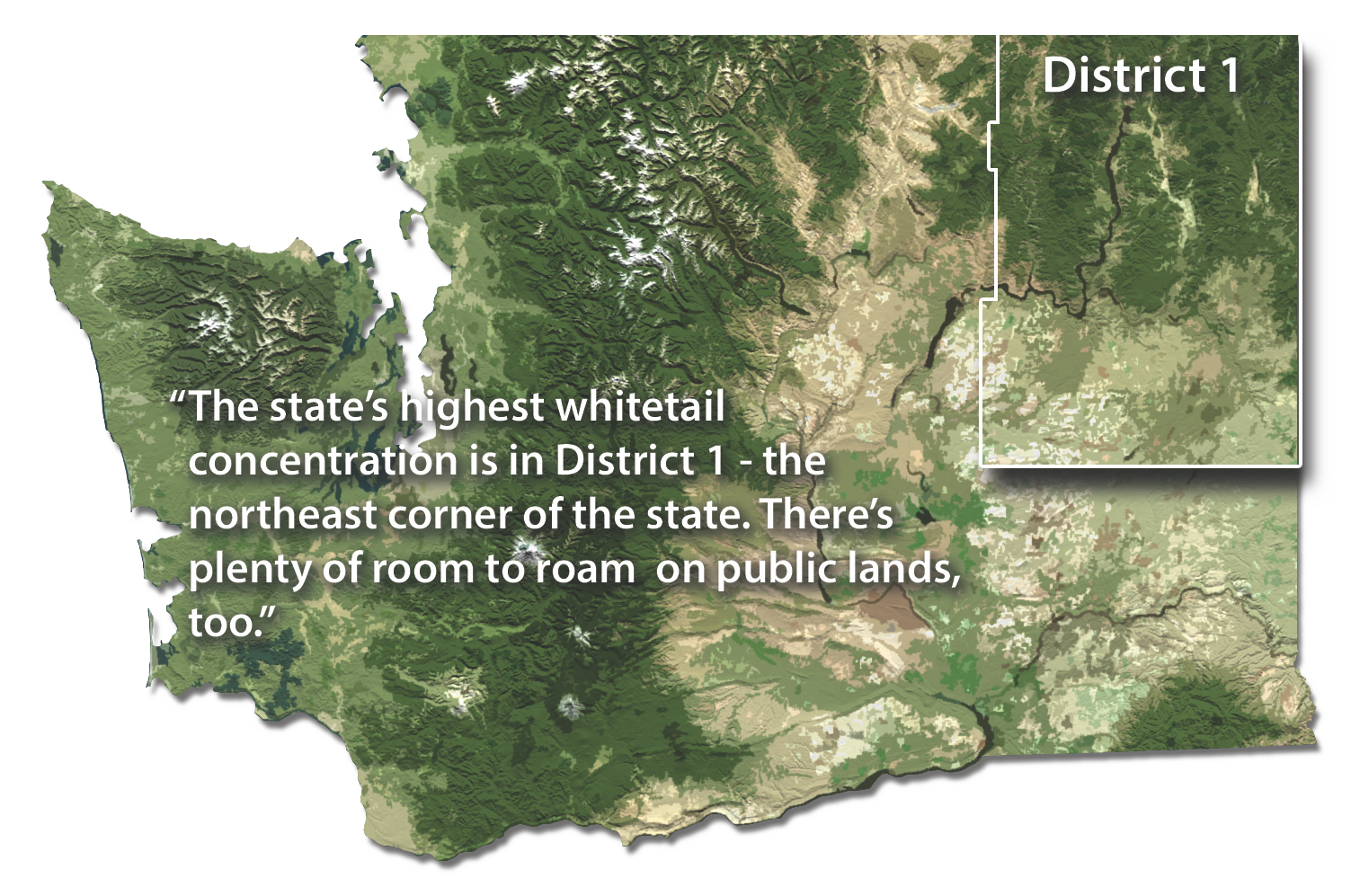
It looks like there is a JavaScript error in a plugin or theme that is causing a conflict with Draw Attention. For more information on troubleshooting this issue, please see our help page.
District 1
Washington and whitetails aren’t often spoken in the same sentence. In fact, given Washington’s geographic location, I’ll argue that many deer hunters from the South and East don’t realize that Washington even has a huntable whitetail population. Many classify this northwestern gem as an elk, blacktail and mule deer state. Perhaps that’s why Washington annually produces outstanding bucks — because its whitetails don’t receive the attention and hunting pressure of deer populations in midwestern states.
If you want a Washington whitetail though, you must choose the correct location. According to Sara Hansen, Washington’s state deer specialist, the state’s highest whitetail concentration is in District 1, which is the northeast corner of the state.
“There’s plenty of room to roam on public lands, too,” she added. “For example, the 1.1-million-acre Colville National Forest holds many whitetails and is a great place to hunt. Inland Empire Paper Company lands are also accessible to the public via permit and have solid whitetail numbers on them as well.”
Whitetail harvest statistics and milder winters in recent years suggest that Washington hunters will continue to enjoy quality whitetail hunting for the foreseeable future. “We haven’t had any brutal winter conditions, and our whitetails are thriving,” Hansen said.
If you want to experience a whitetail hunt unlike any other, hit up the Evergreen State.
Learn more at:
The Washington Department of Fish & Wildlife (360-902-2200)
9. North Dakota
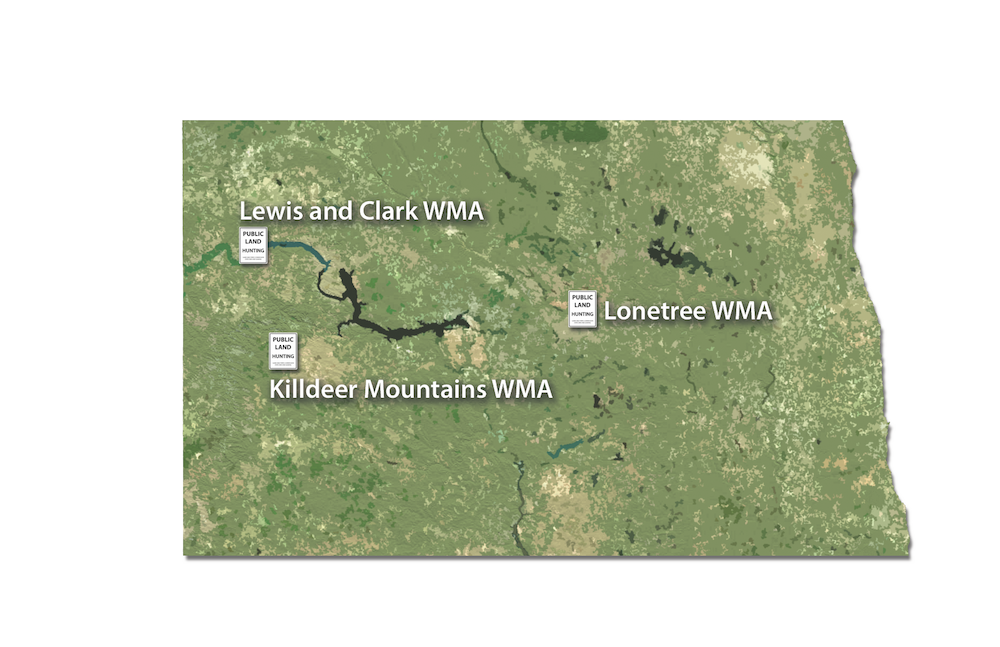
It looks like there is a JavaScript error in a plugin or theme that is causing a conflict with Draw Attention. For more information on troubleshooting this issue, please see our help page.
Lewis and Clark WMA
Killdeer Mountains WMA
Lonetree WMA
Much can be said for a state where a nonresident can arrive, purchase a relatively inexpensive whitetail tag over the counter and hunt on public lands the same day.
Enter North Dakota.
Despite the challenges of brutal winters from 2008 to 2010 and 2 million acres recently expiring from the CRP program, the Peace Garden State continues to offer DIY hunters solid deer-hunting opportunities. In 2015, North Dakota hunters took 20,300 bucks, up from 18,645 and 18,266 in 2013 and 2014, respectively.
Public-land hunting opportunities in North Dakota include:
- State wildlife management areas (WMAs)
- National wildlife refuges (contact each individual refuge for details)
- BLM lands
- U.S. Forest Service lands
- State forest service lands
- U.S. Army Corps of Engineers lands
Three worthwhile WMA tracts are the Lonetree WMA (32,890 acres), Killdeer Mountains WMA (7,050 acres), and Lewis and Clark WMA (1,215 acres). Hunting pressure varies, but, obviously, the farther you hunt from population centers, the more likely you’ll hunt unpressured deer.
North Dakota’s early archery opener includes the possibility of encountering and/or harvesting a velvet-clad buck. Late season in North Dakota — bitter temperatures permitting — can be dynamite, too. Find the food, and you’ll find the deer. If it’s cold enough, hunting pressure will be minimal, if not nonexistent.
The North Dakota Game and Fish Department’s Bruce Dillings said, “You’ll find the highest whitetail concentrations near river drainages. In September, they frequent hay fields and natural browse. During the pre-rut and beyond, they transition to row crops — corn and sunflowers.
“Recent archery-hunting success has ranged from 30 to 40 percent. There are plenty of whitetails on our public lands, but taking a high-quality buck, like most places around the country, is a taller order. Still, our hunters annually take some impressive deer.”
Learn more at:
The North Dakota Game and Fish Department (701-328-6300)
8. Oklahoma
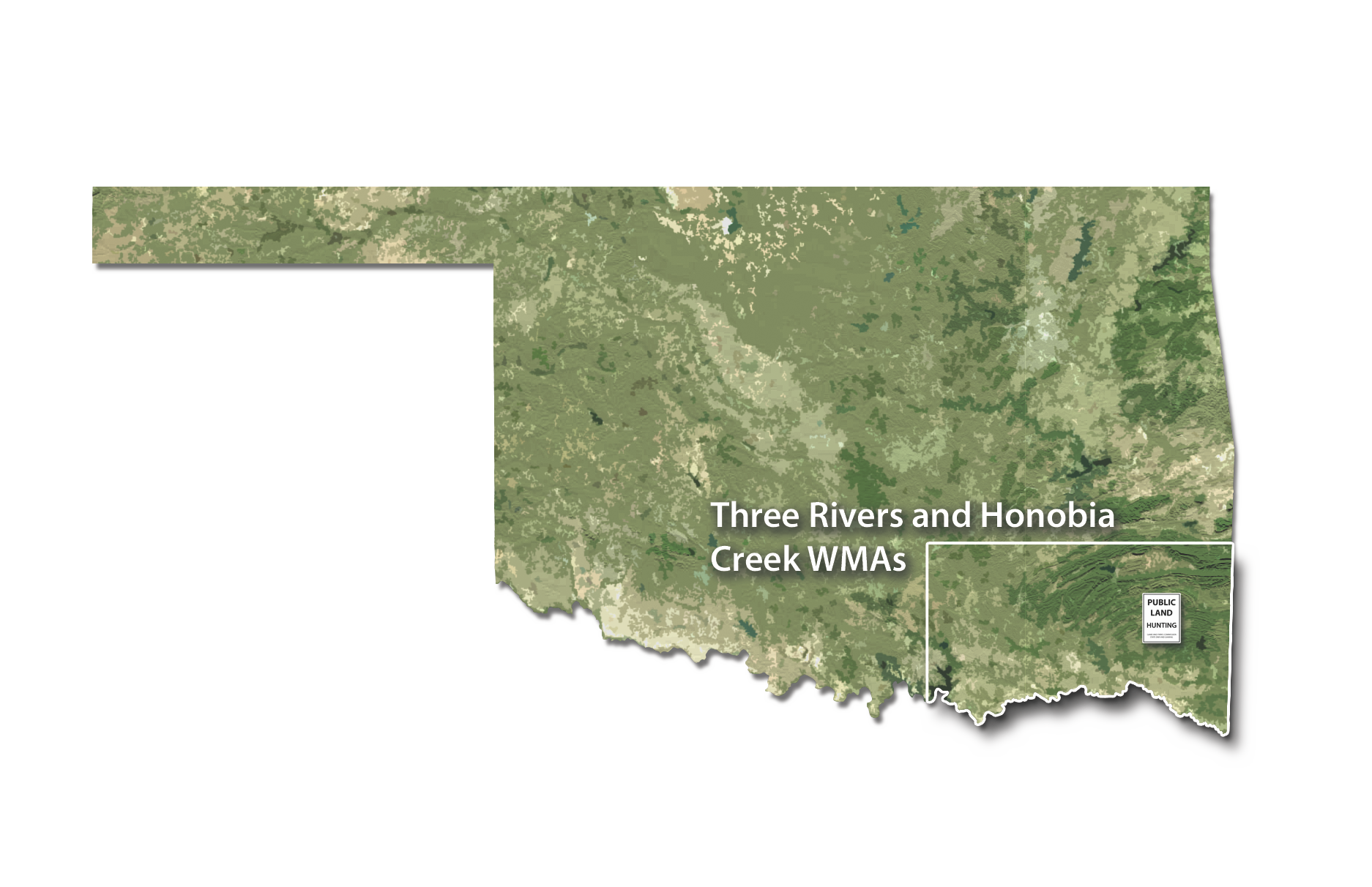
It looks like there is a JavaScript error in a plugin or theme that is causing a conflict with Draw Attention. For more information on troubleshooting this issue, please see our help page.
The Sooner State is sandwiched between two whitetail greats: Kansas and Texas. Unlike in Kansas, Oklahoma bowhunters can purchase a deer license over the counter, and, unlike Texas, ample public-land hunting opportunities abound.
I’ve hunted Oklahoma three times, encountering numerous quality bucks and arrowing a 150-inch buck on a wildlife management area (WMA). Oklahoma’s numerous WMAs are managed and cultivated, plus oak-littered river bottoms on some of them routinely produce boomer acorn crops. All that nutrition yields some screamer bucks.
Emily Clark of the Oklahoma Department of Wildlife Conservation said that southeastern Oklahoma offers the heaviest timber and richest soils, therefore harboring more deer and larger bucks.
“Southeast Oklahoma is a solid bet for hunting whitetails on public lands,” she said. “Hunters do particularly well on the Three Rivers and Honobia Creek WMAs. These areas have booming deer populations and quality bucks. About 920,000 acres are open for public hunting in Oklahoma — about 2 percent of the state.”
Licensed archery hunters can take a total of six deer, two of which can be antlered. And for those hunting with muzzleloaders, their season occurs during the pre-rut in late October.
QDMA’s 2017 Whitetail Report notes that 60 percent of Oklahoma bucks harvested in 2015 were 3 ½ years old or older, ranking No. 5 of all whitetail states for buck age class. Those stats mean you should plan your Sooner State whitetail hunt, well, “sooner” rather than later.
Learn more at:
The Oklahoma Department of Wildlife Conservation (405-521-3851)
7. South Dakota
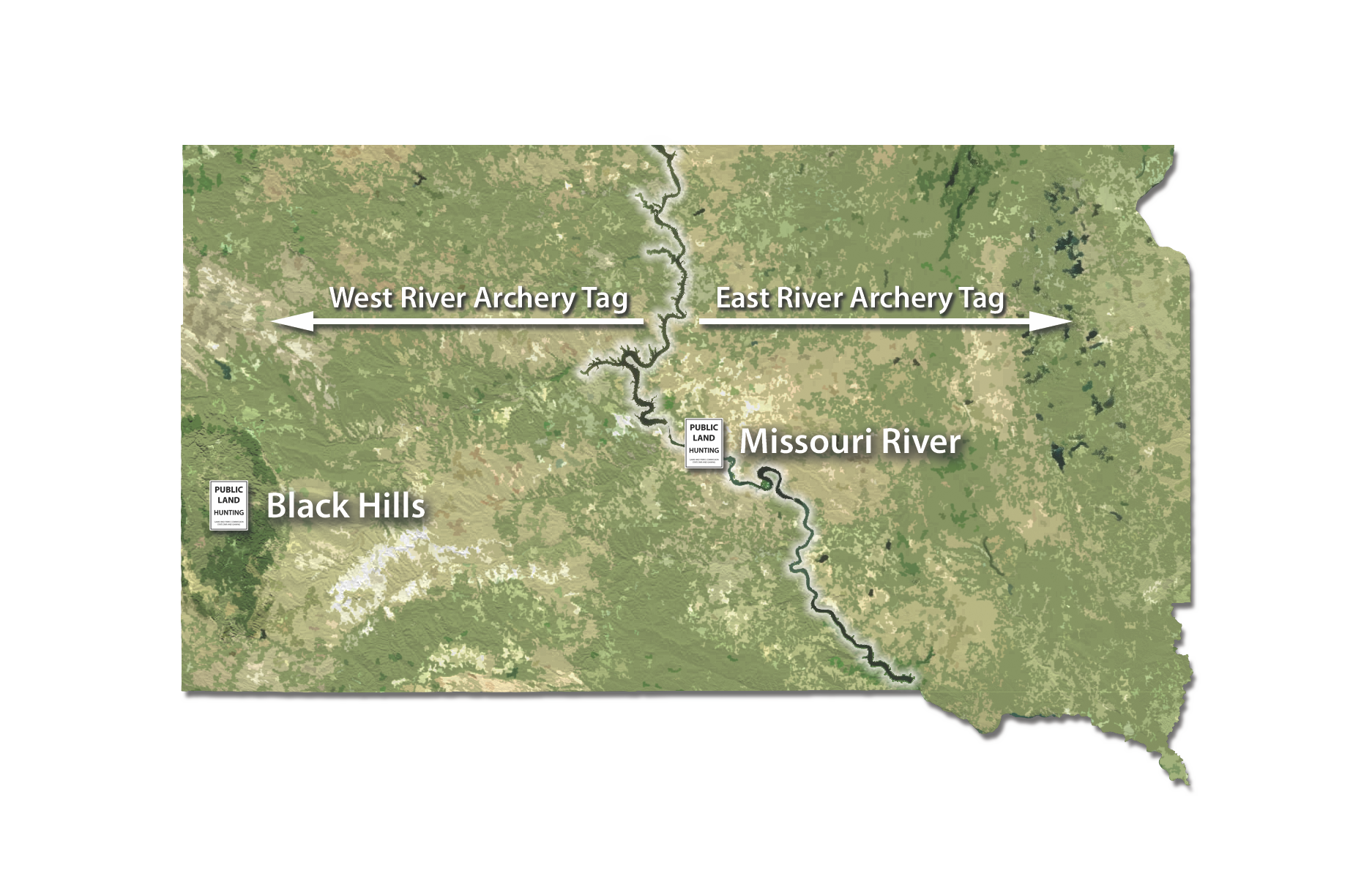
It looks like there is a JavaScript error in a plugin or theme that is causing a conflict with Draw Attention. For more information on troubleshooting this issue, please see our help page.
I’ve loved South Dakota since I was a 13-year-old boy chasing antelope on its prairies. I’ve returned many times since to hunt antelope, mule deer and whitetails. My love for the Mount Rushmore State begins with its vast, rolling prairies and broken landscape. I’ve also zapped several great bucks — some on public lands — there over the years.
Nonresident bowhunters looking to tackle South Dakota must apply for an unlimited archery license online or visit the South Dakota Game and Fish Headquarters in Pierre to obtain one. Nonresident bowhunters may purchase a West River Archery Deer tag (the Missouri River being the dividing line) and an East River Archery Deer tag, or you can purchase one Statewide Archery Deer tag.
Along both fringes of the Missouri River and west of it, mule deer and whitetails flourish. The good news is archers can take either species. The largest whitetails seem to inhabit the east and central portions of the state, while the western sector holds its own in the numbers department, particularly the Black Hills and outlying areas.
Despite major EHD outbreaks since 2011, South Dakota hunters continue to encounter plenty of deer and some giant bucks. QDMA’s 2017 Whitetail Report shows that 30,700 antlered bucks were taken in South Dakota in 2015.
South Dakota offers thousands of acres open to public hunting in the form of Walk-In Areas, Game Production Areas, forest service lands and more. Over the numerous years I’ve hunted South Dakota’s public places, I’ve encountered other hunters only occasionally. Hands down, it’s a great bowhunting destination with good trophy potential and relatively low pressure.
Learn more at:
The South Dakota Game, Fish and Parks (605-223-7660)
6. Louisiana
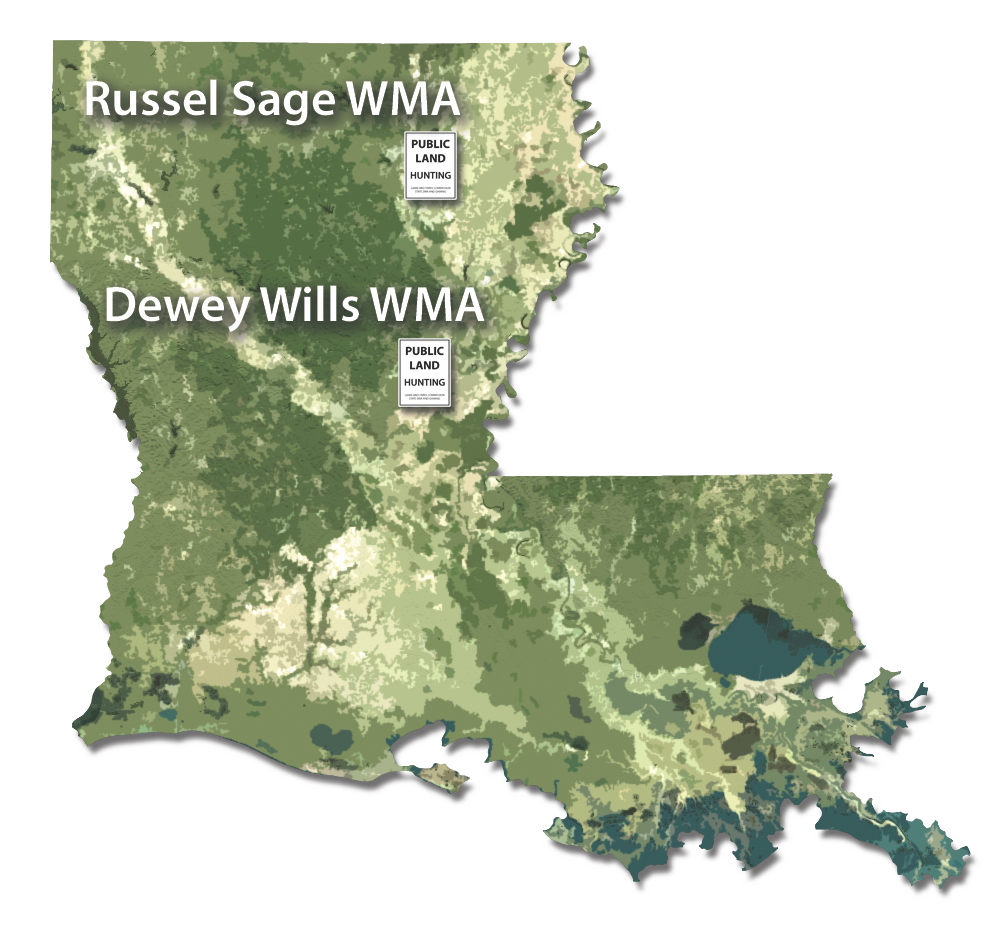
It looks like there is a JavaScript error in a plugin or theme that is causing a conflict with Draw Attention. For more information on troubleshooting this issue, please see our help page.
Gumbo, po’ boys and jambalaya have made Louisiana a top destination for southern cuisine, but did you know the Pelican State offers some of the nation’s finest deer hunting? In 2015, Louisiana hunters tagged 84,416 bucks, 67 percent of which were 3 ½ years old or older per the 2017 QDMA Whitetail Report. That makes it the No. 4 state for highest age class of bucks harvested in 2015.
One would automatically assume hunting opportunities are sewn up tight with private lands and leases. But while leases and hunting clubs are common statewide, so are public-land hunting opportunities. The Russell Sage WMA sprawls across more than 34,845 acres of floodplain and timber and has two camping areas. Grapes, hickory nuts and persimmons are common throughout. Mixed timber includes oak, ash, elm, maple and hickory.
Another consideration is Dewey W. Willis WMA, which is nearly double in size — 63,984 acres of wildlife habitat that includes native forbs and grasses, as well as oak, ash, elm and pecan. These two and many other public-accessible hunting areas offer the traveling hunter an adventure different from most you’ll read about.
Unlike midwestern states where the rut annually occurs from early through mid-November, Louisiana’s deer rut is a bit more complex. On the far southcentral edge, breeding occurs as early as late September through early October. In contrast, the southeast sector and several areas throughout the state have a late rut from early through late December. Multiple other areas report annual breeding as late as mid- to late February. When you choose a hunting location, be sure to check rutting dates with a local biologist in order to plan a productive hunt.
Learn more at:
The Louisiana Department of Wildlife and Fisheries (225-765-2800)
5. Missouri
Squeezed between whitetail meccas Kansas, Iowa and Illinois is the Show Me State. Rich with wildlife, Missouri offers more than 1,000 conservation areas (CAs), most offering hunting opportunities and ideal deer habitat.
This state’s nonresident licensing fees are incredibly reasonable. A $225 archer’s hunting permit allows bowhunters to take two deer of either sex (only one antlered deer may be taken before Nov. 11) and two turkeys of either sex. Yes, those noisy flocks are fair game for archery deer hunters.
The potential for trophy deer in Missouri is certainly worth noting. In 2015, according to the 2017 QDMA Whitetail Report, hunters took 122,524 antlered bucks, up from 104,815 and 114,250 in 2013 and 2014, respectively. Of those, 20,169 were taken with archery gear. About 35 percent of the Show Me State’s 2015 buck harvest consisted of 3 ½-year-old or older bucks. Top counties for Pope & Young entries are Jackson, St. Louis, Boone, Putnam and St. Charles.
A map in the Missouri Deer Season Summary & Population Status Report shows that 2015’s highest antlered-buck harvest densities were in northern Missouri and stretching primarily south and east to the state’s south border. The east-central part of the state produced similar results.
The northwest region, per the Missouri Deer Season Summary & Population Status Report, is still recovering from severe EHD outbreaks in 2012, while the southwest region racked up a record deer harvest during the 2015-16 season. Other areas have remained mostly stable, with the Ozark region accounting for Missouri’s highest harvest in 2015-16.
Learn more at:
The Missouri Department of Conservation (573-751-4115)
6. Ohio
The Buckeye State isn’t as public-land rich as some of the states on this list. According to Ohio DNR deer biologist Clint McCoy, “About 95 percent of Ohio’s real estate is privately owned.” Nevertheless, hunters can show up, buy an inexpensive license and have a chance to hunt world-class bucks.
“Some of our public lands are heavily pressured, but deer densities are higher down in Ohio’s southeast portion where it’s more heavily wooded,” McCoy said. “With some effort, you can dodge lots of the pressure and experience a quality hunt.”
McCoy continued, “I’ve extensively hunted a public-accessible parcel in central Ohio. I encounter deer and small-game hunters fairly often. Still, I’ve had fairly good success deer hunting it. Pressure is something you must deal with on Ohio’s public lands, so success comes by working harder and thinking smarter than average hunters, and here I include hunting weekdays versus weekends, if possible.”
McCoy added, “Ohio historically produces ‘magazine-cover’ bucks, which is the central reason hunters travel there to bowhunt. I imagine that our affordable hunting permits/licenses are attractive, too. And Ohio’s nearness to the East Coast makes it the closest midwestern state that eastern hunters can travel to.”
Learn more at:
The Ohio Department of Natural Resources (614-265-6565)
3. Nebraska
The Cornhusker State is arguably one of the most DIY-friendly states for the traveling whitetail hunter. Archery deer licenses are offered affordably over the counter, public lands are abundant and hunting pressure is considerably lower than in most midwestern states. In fact, I’ve never encountered another deer hunter while hunting in Nebraska.
Despite sometimes cold winters, Nebraska deer thrive because of incredible habitat and plentiful food. Nebraska’s deer herd reached all-time highs in 2010-11.
“Honestly, we had too many deer in 2010,” Kit Hams, Nebraska’s big-game program manager, said. “That year, 38,000 whitetail bucks were harvested. Of course, EHD claimed lots of whitetails in 2011 and 2012. In 2014, harvest numbers were down substantially, with only 24,000 bucks harvested. But in 2015 hunters took 28,000 bucks. Things are rebounding nicely. Of our buck harvest, about 32 percent are 3 ½ years old or older. So, there’s good potential for a trophy here.”
As far as locations, Nebraska offers diverse habitats. The east and south primarily feature farmland with rolling hills and winding river bottoms. Out west you’ll find ponderosa forests and enormous buttes. In between northcentral Nebraska and northwestern Nebraska you’ll find the Sandhills. Whitetails are prevalent statewide, but, said Hams, “you’ll consistently find the larger and older deer in the western half of the state where hunting pressure is lower.”
Learn more at:
The Nebraska Game and Parks Commission (402-471-0641)
2. Kansas
There was a time when drawing a Sunflower State archery deer license wasn’t an annual event. But today, many units are drawn without a preference point. Hunting pressure has certainly increased given Kansas’ popularity. Still, Kansas is, well, Kansas. Each time you climb a tree, seeing a monster is possible.
Per the 2017 QDMA Whitetail Report, Kansas hunters collectively nabbed 42,434 antlered bucks in 2015. In 2014, 49 percent of the buck harvest consisted of bucks that were 3 ½ years old or older. One reason buck age class soars in Kansas is its firearms season unfolds well after the peak rut. If that weren’t the case, Kansas likely would be no different from other states. Plus, Kansas hunters are allowed only one buck tag, whether by archery or firearms.
Even on public lands, Kansas hunters have a shot at taking home their nicest buck ever.
“We have several hundred wildlife areas (WAs) and about a million acres are enrolled in Walk-In,” Mike Miller, chief of information with Kansas Department of Wildlife, Parks & Tourism, said. “Bowhunters do well on WAs with reservoirs and riparian habitat. The farther away from metropolitan areas you hunt, the less hunting pressure you’ll likely experience. And the larger the WA, the farther you can walk from roads to evade hunting pressure. Near Emporia are multiple WAs with several reservoirs in a 40-mile radius. That’s a good area, although the entire state offers quality hunting.”
Miller also shared that it’s not unreasonable for smart, hardworking bowhunters to encounter 140-class or larger bucks on public lands, although expectations must be reasonable.
“Bowhunters seem to be fairly selective here, so the age structure of our herd is very positive,” he added. “I encourage out-of-staters to choose a few parcels to focus on. That way, if pressure is greater than anticipated on your Plan A parcel, you have options to fall back upon.”
Learn more at:
The Kansas Wildlife, Parks & Tourism (620-672-5911)
1. Iowa
Iowa’s premier units require three to four years of applying to pull a tag. The hunting crowd often whines and complains about that. But if Iowa allowed over-the-counter license sales it wouldn’t be the big-buck mecca it is. Its careful license distribution reduces hunting pressure and substantially increases the herd’s age class. That means you get the rare opportunity to chase world-class bucks each time you pull a tag.
Iowa has a wildlife-rich mix of rolling and lightly wooded hills and flat farm country with occasional river bottoms. Some areas are a tad more rugged with bluffs. For a bowhunter, plotting setups is fairly straightforward: hunt the terrain during the rut, and buckle up for the action.
Iowa grows tons of corn, one reason deer are so huge and healthy. Research commissioned by the Iowa Corn Promotion Board shows Iowa corn farmers grew 2.5 billion bushels on 13 million acres in 2015. That’s 140 billion pounds of corn! Iowa deer don’t stress to find food; it’s everywhere.
Public-land hunting opportunities abound in Iowa, too.
“Many of our public hunting areas have potential for a fun and successful hunt,” Tyler Harms, wildlife research biometrician for the Iowa DNR, said. “Deer densities remain high in northeast Iowa due to the rich habitat. Southcentral Iowa is another good area, and harvest was up down there in 2016. I encourage that DIY hunters use our online hunting atlas to obtain valuable info on any and all of Iowa’s public hunting areas.”
Learn more at:
The Iowa Department of Natural Resources (515-725-8200)
